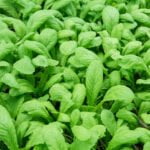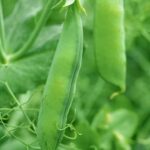Introduction
Many people want to grow their own food, but don’t know where to start. One option is to consider a vegetable garden on a hill. A garden on a hill provides excellent drainage and gets plenty of sun throughout the day, as well as often offering spectacular views. In addition, many vegetables do well in areas with soil that has good slope or is rocky, making a hillside the ideal spot for planting. Vegetables that may benefit from this environment include tomatoes, squash, peppers, onions, kale, zucchini, eggplant and herbs such as rosemary or marjoram.
To get started with growing vegetables on a hillside it is important to carefully plan the layout and make sure to prepare the land properly. The first step is to select an area that gets at least 8 hours of sunlight each day and then mark off where you plan to plant each type of vegetable. Next determine the moisture needs of each vegetable/herb and choose spots accordingly – some plants prefer dry soils while others need extra water. Then make sure to add compost or fertilizer so the soil will be rich in nutrients for healthier plants. Finally consider whether stakes or raised beds may be needed for steeper hillsides before bringing in the seeds or plants for your new garden!
Preparation
When starting a vegetable garden on a hill, it is important to have the right tools in order to ensure the project goes well. Before beginning, you will need: a shovel; a soil rake; garden hoses; stakes and string for outlining the area; and soil amended with compost or peat moss. Additionally, if you plan on using irrigation, you will need a system for pipes and sprinklers to provide water. You should also consider protective barriers such as fence posts, trellises, or chicken wire to help protect your garden from pests and animals. Finally, you may want wheelbarrows or other equipment to help move soil up and down the hills if needed. Having these tools on-hand before beginning your vegetable garden will make the entire process much easier.
Soil Quality
When creating a vegetable garden on a hill, it is essential to determine the quality of your soil. Ideally, you will have light-textured and well-drained soil such as sandy loam or silt loam. To check the quality of your soil, you should do a home test by collecting a sample and running it through a soil composition test kit.
Soil composition test kits are readily available online or at local garden centers and typically include tools such as pH meters, electrical conductivity testers, and other devices to measure the various components of your soil. Depending on the type of produce you plan to grow in your garden, these tests can help you determine if you need to add any additional amendments such as fertilizer to boost nutrient levels in order for plants to thrive. Additionally, the results will help you determine if it would be beneficial to use raised beds in order to improve drainage and provide better aeration for roots.
Plant Selection
When selecting vegetables to plant in a hillside garden, it is important to take into account the angle of the hill and the kinds of soil that are present. Take some time to observe the area whenever possible, looking closely for any signs of exposed roots or rocks, as these can make vegetable gardening on a steep hill difficult. A few very hardy vegetables thrive in hilly conditions and do not need much fertilizing or mulching, making them ideal choices for your vegetable garden: radishes, carrots, arugula, beets and turnips all excel on hillsides.
Crops like asparagus and perennial herbs such as oregano also flourish on slopes all season long. Fruiting vegetables such as tomatoes benefit from adequate drainage but will require additional staking if planted in areas prone to strong winds. Cucumbers and squash usually do well in milder climates with some extra fertilizer work; otherwise look for early hybrids that don’t require regular pruning if you live in an area with a more extreme climate. Last but not least – leafy greens are one of the most popular types of crops for hillside gardens due to their low maintenance needs! Varieties like spinach and lettuce do particularly well on slopes and enjoy sun or partial shade depending upon what fits your specific area’s growing requirements best.
Design
When designing your vegetable garden on a hill, it is important to consider how to maximize the space that you have. One way to do this is by creating several tiers of vegetable beds in order to fit more plants on the hill. This way you can stagger the beds so that each tier is slightly higher than the last. You can also use retaining walls with soil or compost and terracing along the side of the hill to help create additional levels which will allow for even more vegetables to be grown. Additionally, you can install a trellis or wire mesh at different levels up and down the hillside. This will allow for pole beans and other climbing plants to grow in an orderly manner and provide some support as they climb upwards. Additionally, you can add vertical growing structures such as cages or teepees in order to further maximize space on your vegetable garden on a hill. Finally, make sure to incorporate mulching into all of your efforts in order increase water retention, reduce weeds, and promote a more fertile environment for your plants. By keeping these design elements in mind you can optimize your garden for maximum output when making a vegetable garden on a hill!
Watering Methods
One of the main things to consider when making a vegetable garden on a hill is proper and effective watering. There are several different methods of watering your vegetable garden on a hill, including:
1. Hand-watering – This is the most traditional and obvious method. Simply take your hose up to the top of your hill and hand-water each row or section of vegetables as needed.
2. Gravity water system – A gravity water system can be used by connecting the hoses together between rows and having them run downhill, with one end connected at the top and the other at the bottom of your hill. This will allow for an even distribution of water along each row so no one area gets too much or too little.
3. Drip irrigation – You can use drip irrigation to set up an automated watering system that is tailored to give just enough moisture to each area without over-saturating any soil areas or root systems. This method requires more effort upfront, but it will save you time in the long run as you will not have to manually water every section each time thirsty plants need a drink!
4. Soaker hoses – These specially designed hoses are incredibly efficient as they slowly seep moisture into the soil through tiny holes along their length eliminating evening out of moisture levels issues associated with gravity systems.
Planting
When you have a hillside vegetable garden, you need to be strategic about how to space out your plants in order to maximize the productivity of your plot. First, consider what vegetables you are going to plant. Different vegetables have different needs, so you will want to adjust plant spacing accordingly. For most root-based crops including potatoes, carrots and beets, it is best to give them 8 inches of space between each other in rows that are at least 12-14 inches apart. Leafy greens like lettuce and cabbage work well when planted as close as 6 inches apart in 10-12 inch spaced rows. For taller vegetables like broccoli or tomatoes, give them 24 inches of space between plants with 4 feet between rows. And if using vining vegetables such as cucumbers or squash, aim for 2 feet between the plants and 4 feet between the rows.
Maintenance
Since hilly terrain can make gardening difficult, it is important to take steps to ensure that pests and plant diseases are kept to a minimum. One of the best ways to do this is to practice good weed management. Weeds can act as hosts for pests and diseases and allow them to thrive in your garden. Keeping weeds at bay by pulling them up or using fertilizers or organic treatments like neem oil can help stop these problem-causing organisms from invading your garden. Additionally, strategically placing mulch in between plants can impede on weed growth.
When planting your plants, be sure to give them enough room between each other; if they are overcrowded they become more susceptible to disease spreading amongst the exposed foliage of one plant to another. Ensure you have proper drainage throughout the hillside so that there isn’t standing water where pests may be breeding. Finally, monitoring your vegetable garden regularly is key in keeping pests and plant diseases away as it gives you an opportunity to catch any issues early on before they get out of hand.
Harvesting
Harvesting vegetables from a hill garden can be challenging. Start by cutting the produce at its stem, using sharp pruning shears to avoid damaging the surrounding plants. For leafy greens, take the whole leaves and leave two or three seedings behind so they can regrow. For root crops like carrots and turnips, use a digging fork or spade to lift them out gently. Brush dirt off your harvest and rinse with water before eating or storing them. If it is not time to harvest, then you can use scissors to prune away damaged leaves of your plants instead of harvesting them. To protect your delicate crops from frost damage, drape them with a row cover or specialized fabric when an unexpected cold front is on its way. With proper care, you should have fresh vegetables from your vegetable garden on a hill for months to come!
Conclusion
There are numerous benefits to owning a vegetable garden on a hill. Firstly, you can enjoy freshly-picked nutritious fruits and vegetables in your home-grown produce without relying solely on the supermarket. Growing vegetables on a hill also reduces soil erosion, which is especially important if the area experiences high rainfall or flooding. You will also benefit from increased drainage, alleviating waterlogging problems during wetter seasons. Additionally, growing your own vegetables helps protect local biodiversity as pests are less likely to have access to your crops than if they were planted on flat ground. Finally, having a vegetable garden on a hill offers more sunlight for your crops as well as an improved aesthetic landscape for the local community.

If you’re looking to get into vegetable gardening, or are just looking for some tips on how to make your current garden better, then you’ve come to the right place! My name is Ethel and I have been gardening for years. In this blog, I’m going to share with you some of my best tips on how to create a successful vegetable garden.





